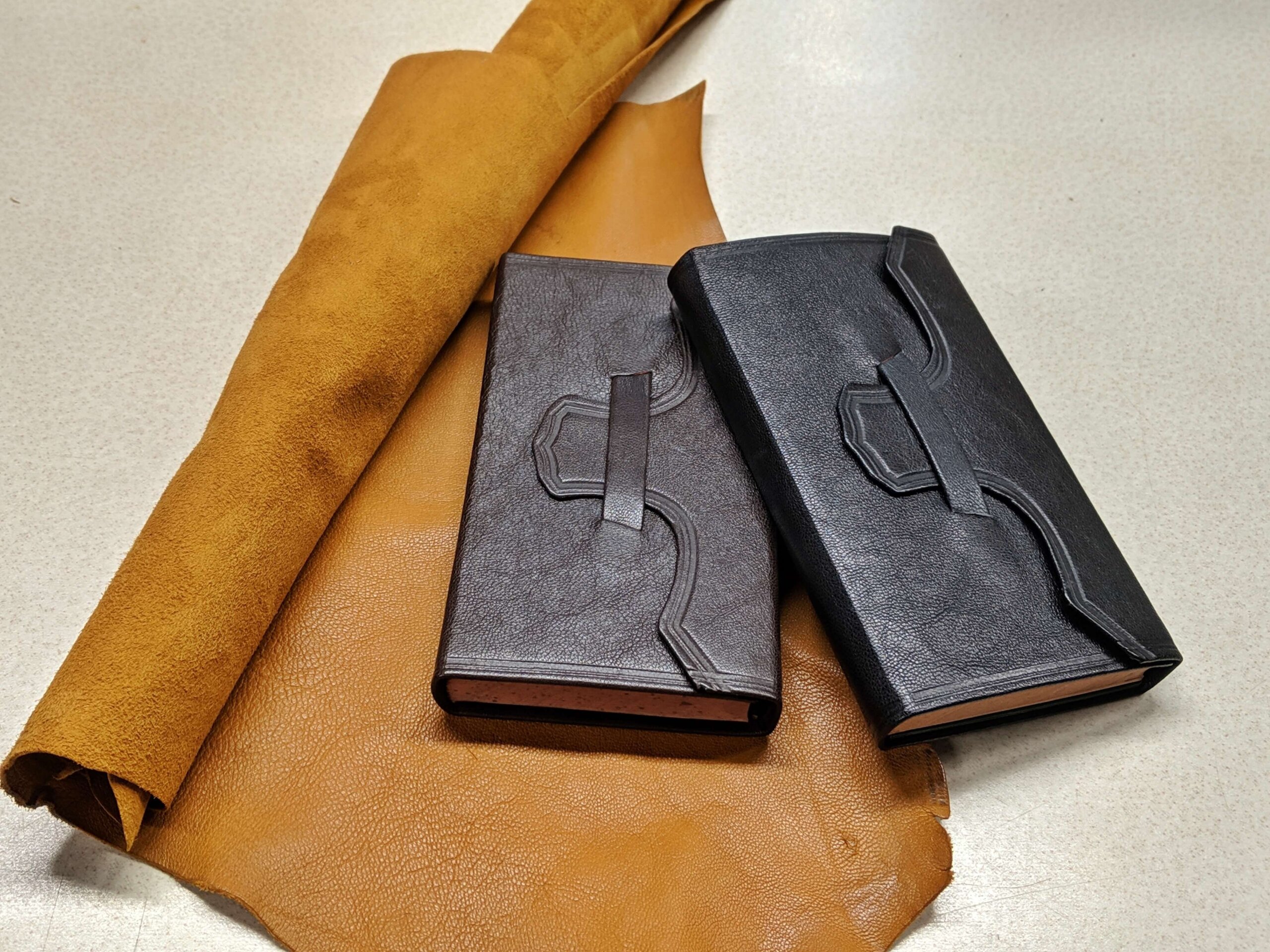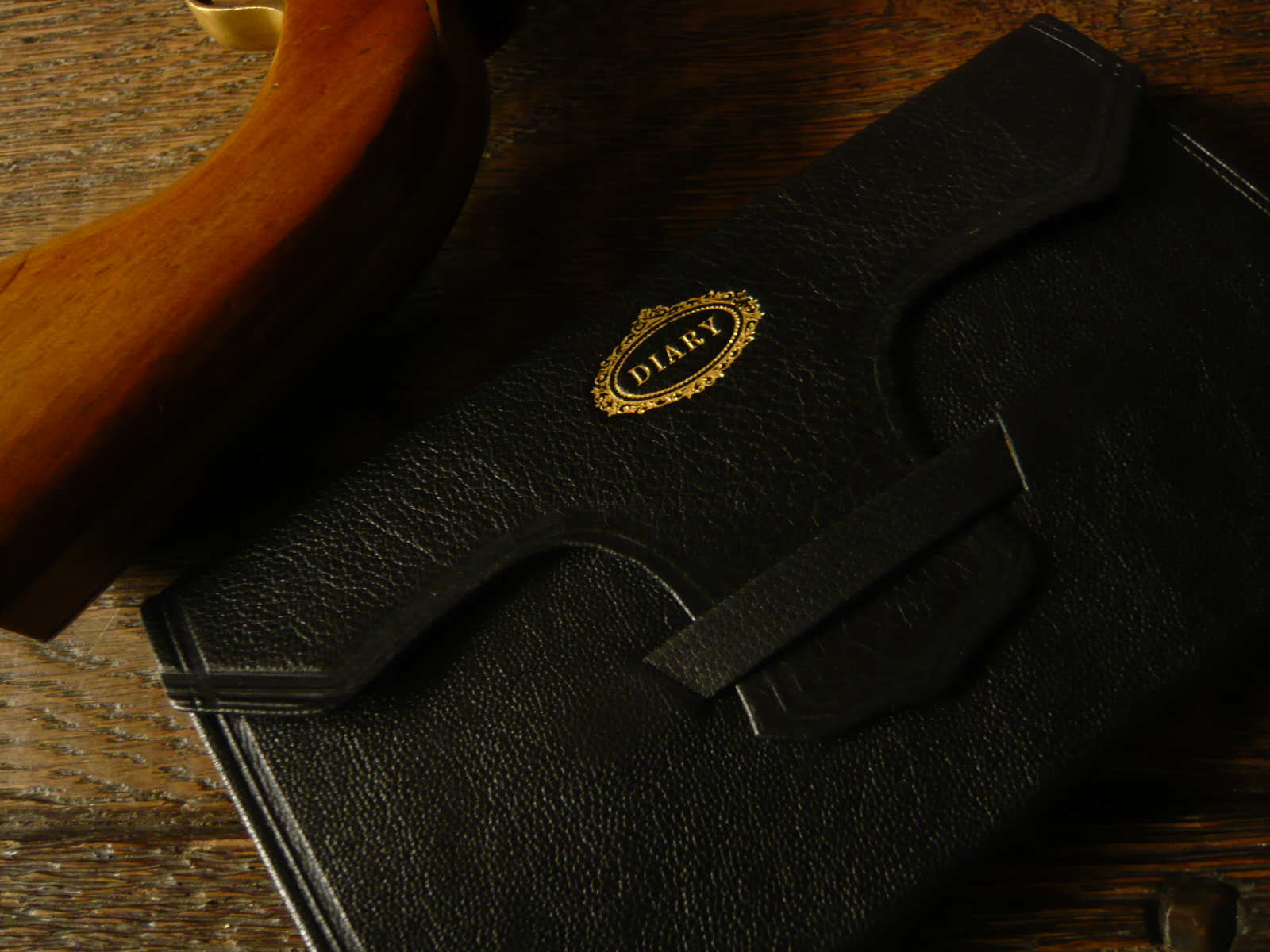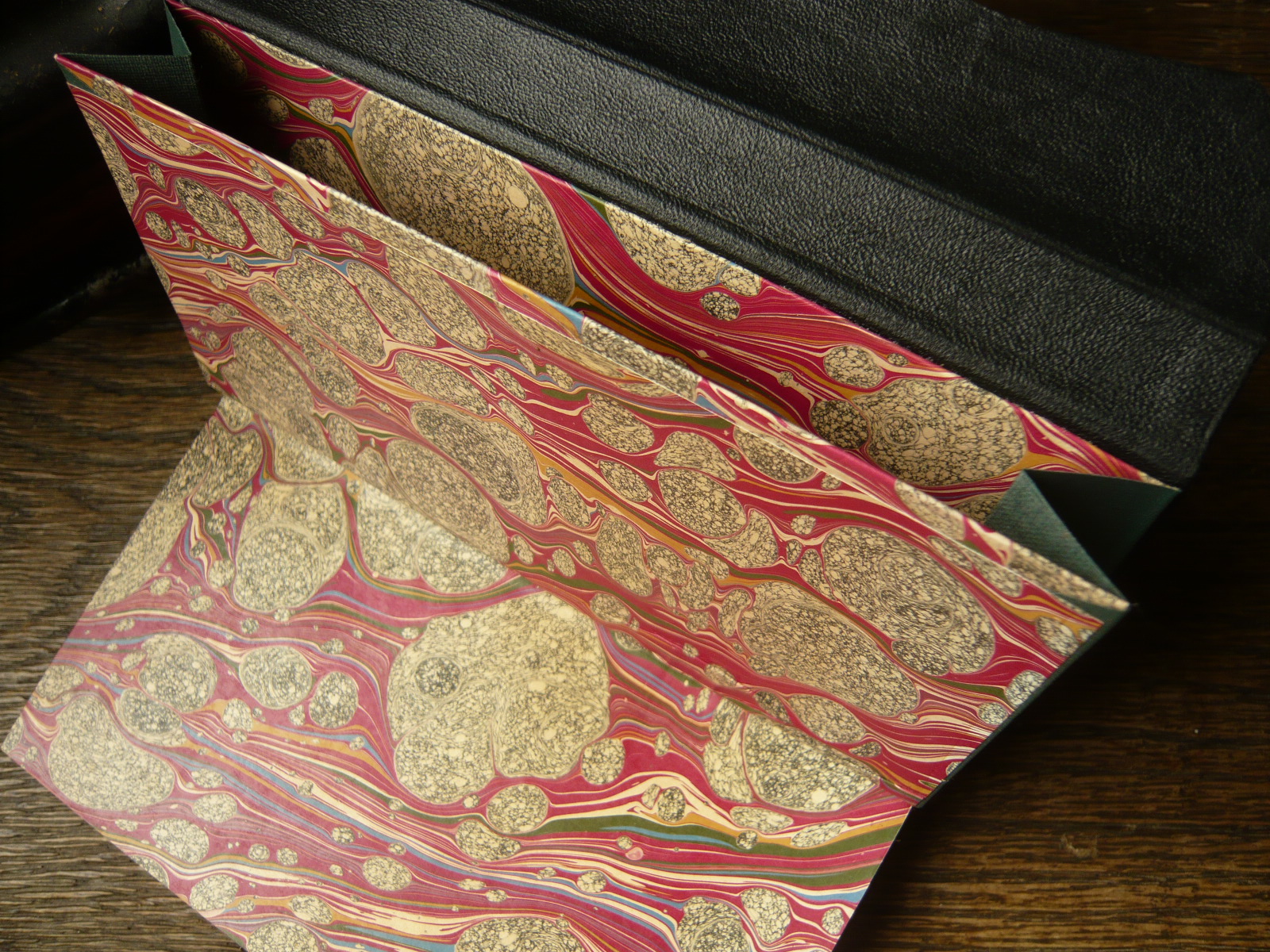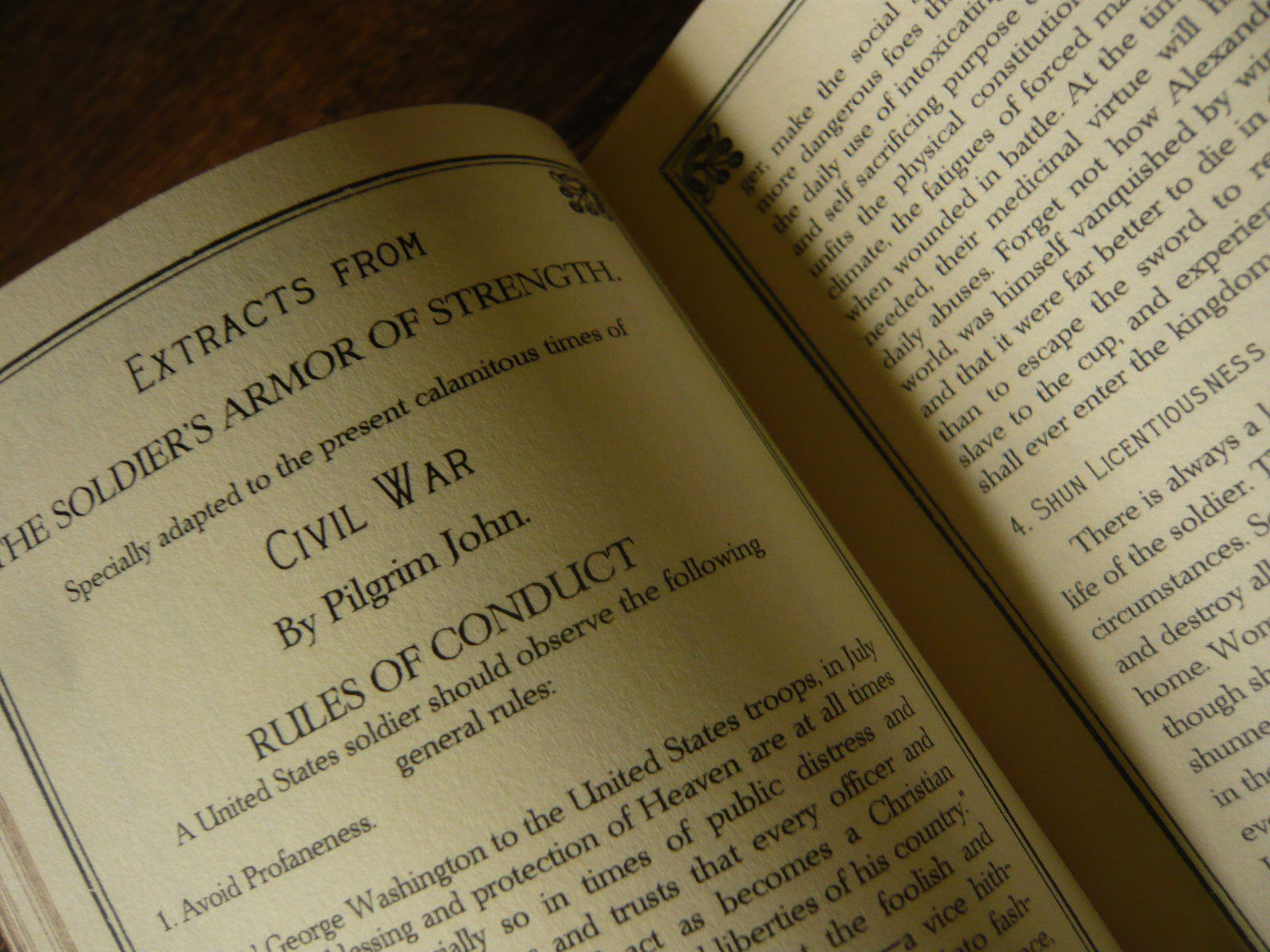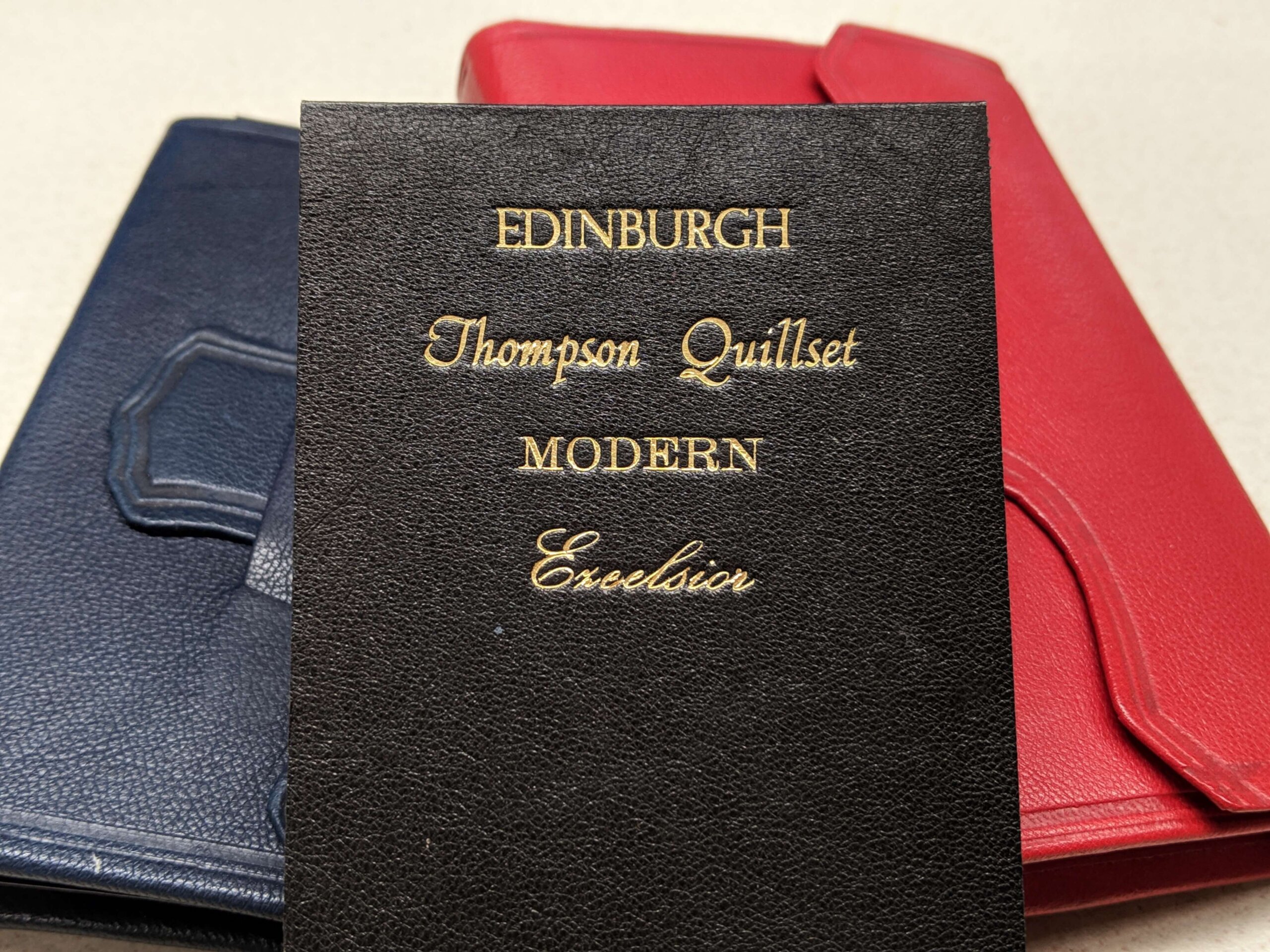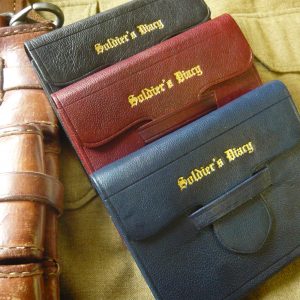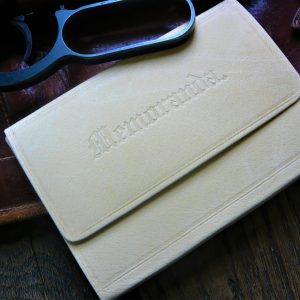Civil War Soldier’s Pocket Diary
$185.00 – $200.00
Note: If selected, please indicate the initials or name you would like as well as the font you would prefer in the notes at checkout. (Fonts may be seen in the last picture above.)
Pocket diaries were commonly carried on both sides of the conflict. They were sold annually, and included a variety of postage and time tables, almanacs, religious encouragements, and space for recording both receipts and daily events. Many included an inner pocket. The unique flap closure was found only on these diaries and the occasional pocket Bible, and represents a unique 19th century binding style. Our reproductions run 176 pages and include all the printed material above, a space for every day of the year, and an extra 16 page blank section at the rear. They measure 6″ by 3 1/4″ and fit neatly in a pack or tunic pocket.
Contents, all re-set from Civil War originals:
Title Page
Contents
Important Addresses
Rates of Postage
Distances from New-York to some of the most important places in North America
Interest Table
Interest Per Day
Penalty for Usury state by state (as per the original, both northern and southern states
General Cash Accounts
Cash Accounts by Month (with one page per month)
Extracts from The Soldier’s Armor of Strength, specially adapted to the present calamitous times of Civil War, by Pilgrim John: Rules of Conduct
A Soldier’s Morning Meditation, Prayer, Hymn, etc.
A Soldier’s Evening Meditation…..
Counsel to Soldiers (on health, wounds, care of feet, etc.)
Daily Diary (3 days per page, headed as “January 1, January 2, January 3, etc.)
Memoranda (6 pages)
Blank leaves at rear
Are these Diaries on the side of the Union or against the War of Northern Aggression?
Though now being made in East Tennessee (which was a hard mix of both northern and southern sympathizers), these reproductions are very slightly more Union in their contents. To wit: The listed postal rates are Northern, the South having started their own service in 1861. To be fair, there was some crossover of printed material. The included “Penalties for Usury”, for example, lists interest laws from Alabama to Wisconsin. If a hue and cry is raised over this, future editions may change, but at this point, we are not offering C.S. and U.S. versions of the diary.
The Standard Undated Version vs. 1864 Version:
We have not seen an original undated version of this type of journal. Much like the modern day planner, they were sold annually, with the year on both the title page and the cover. Our standard version is undated, though we also offer an 1864 diary. Though both reproduce the original format offering space for January 1, January 2, etc., we don’t yet know whether you, the reenactor, would rather have a “generic” version or a year specific (and thus campaign specific) version, so we’re offering both. The 1864 version features a single page calendar for the year, a list of Sundays, eclipses, and Feb. 29th (it was a leap year.) The undated version omits the above, including instead a table of contents and space for important addresses. Please specify which you’d like when you order. And let us know if there is strong interest in diaries for other years.
Construction
Aside from a computer and electric lights, a 19th century binder could walk into our shop and feel right at home. The process of folding, sewing, making the covers, etc. are accomplished with eight fingers, two thumbs, and very old tools. The one change we’ve purposely made is to the method of sewing. Even back then, tradesmen cut corners to increase profits, and, for something you hope to carry in your pack or pocket for years, that seemed like a bad idea. Originally sewn on very light cords laid into notches cut in the textblock, we opted for the much stronger (but slightly later) method of sewing on strips of cloth called tapes. The paper is a 60# cream white, and the vellum finish is an excellent match for the machine-made paper of the day. The edges are sprinkled and colored, and hand-marbled paper is used for the endsheets and the inner pocket. They are bound in morocco leather and, like the originals, are available in several colors, though black and then dark brown were most common.
Our Opinion and Some Pertinent Testimonials: These are the the finest reproduction pocket diaries available anywhere. Though we’ve not yet fully tested them, they’ll transport well in any standard time machine (Models XB2000 or newer) and will pass the most rigorous inspection, whether by expert witnesses from the 1860’s or by our own TTB (Time Transit Bureau).
On a slightly more serious note: “Your work is amazing… I have searched the web for a long long time and you are the only person I have ever seen to make a period correct civil war pocket diary.”
“[It] looks absolutely perfect! I could hardly believe my eyes!…I will state my unsolicited opinion about your work: I believe your prices are (too) (too) low. ”
Price and ordering information:
Standard Undated Civil War Soldier’s Pocket Diary (with “Diary” stamped in gold on flap): $185* in black, dark brown, or saddle tan. Please tell us which color you’d like.
1864 Civil War Soldier’s Pocket Diary (with “1864 stamped in gold on flap): $185* in black, dark brown, or saddle tan. Please tell us which color you’d like.
We offer a refillable version here, as well as two budget versions: a Kraft-Tex version for $39 here, and a $65 leather cut-edge version here.
By Appointment
Monday Through Friday
9AM - 6PM
Phone
(865) 621-7923
info@gildedleafbindery.com
Address
1149 Walker School Rd.
Maryville, TN

